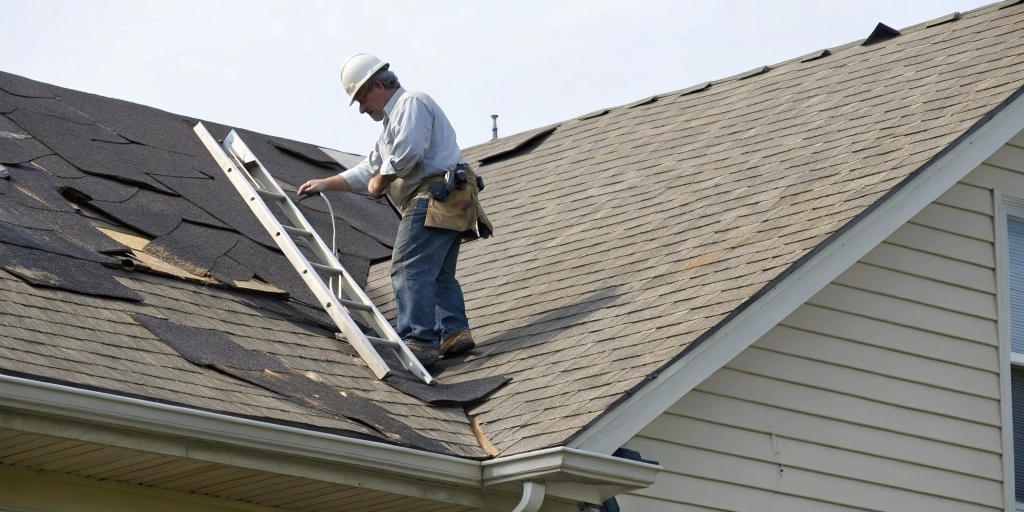
Inspection Red Flags Roof Companies in Huntsville AL Catch Every Time
The weather in Huntsville doesn’t always go easy on rooftops. From summer storms to surprise winter freezes, roofs take a beating year-round. That’s why experienced roof contractors in Huntsville AL are trained to spot signs of trouble—many of which are completely invisible from the ground. These red flags might seem minor, but they often hint at bigger issues hiding underneath.
Water Stains or Discoloration Under Shingles Pointing to Hidden Leaks
Shingles may look fine on top, but underneath, water stains can tell a different story. Roof inspectors often peel back a section to check for dark spots or discoloration on the underlayment or wood decking. These marks usually mean water has already gotten past the shingles, even if there’s no obvious drip inside the house yet. Hidden leaks like this can quietly grow worse with every storm, leading to rot, mold, or ceiling damage before anyone notices.
Huntsville roof contractors regularly catch these early signs of water intrusion during annual roof checks. The challenge is that these stains don’t show up in a quick glance from the ground. That’s why local homeowners trust roof contractors in Huntsville AL to get on the roof and take a closer look before things spiral into more costly repairs. Spotting leaks early can mean the difference between a quick fix and a major roof restoration.
Granules Accumulating in Gutters Signaling Asphalt Shingle Degradation
Granules in gutters might look like dirt, but they’re actually tiny protective pieces that coat asphalt shingles. Over time, shingles naturally shed some granules—but excessive buildup means the shingles are wearing out. Roof companies near me see this all the time in homes with older roofs or those exposed to intense sun and rain. Once shingles lose too many granules, they become thin and brittle, allowing UV rays and moisture to do serious damage.
Huntsville roof contractors often start with a gutter check during an inspection because the granules are a silent alarm. Homeowners usually don’t notice until they see bits washing out of the downspouts or collecting near the drain. An experienced roofing team can tell right away whether it’s normal aging or a sign that the roof needs to be replaced soon.
Curling, Cracked or Missing Shingles That Reveal Roof Wear
Shingles aren’t just a protective layer—they’re the first line of defense against water, wind, and hail. Curling edges, cracked surfaces, or entire shingles missing are all red flags for inspectors. These flaws expose the roof deck and let moisture creep underneath, especially in areas like Huntsville where rain can be heavy and unpredictable. If not addressed quickly, these weak spots can lead to widespread damage.
Roofing near me often involves more than just patching holes. Huntsville roof contractors look for patterns in the damage—whether it’s due to poor installation, extreme weather, or simply old age. A few missing shingles may seem harmless, but they often point to bigger problems lurking beneath the surface.
Sagging or Uneven Rooflines That Suggest Structural Stress
A sagging roof isn’t just about appearance—it’s often a sign that something deeper is going wrong. It could be weakened rafters, waterlogged decking, or shifting supports. Roof contractors in Huntsville AL check rooflines from multiple angles to catch uneven dips or curves that the untrained eye might miss. These sagging areas usually appear over time, and they can indicate long-term structural stress.
What’s tricky is that the symptoms aren’t always obvious from inside the home. There might be no ceiling damage or water leaks yet, but the structure underneath could be shifting. Roof companies near me use precise leveling tools and thorough assessments to catch these early-stage sagging signs before they become major structural problems.
Hail or Impact Damage Invisible from the Ground but Identified by Inspection Teams
Huntsville gets its fair share of hailstorms, and even small hail can bruise shingles without breaking them outright. These bruises weaken the shingle layers and shorten the roof’s lifespan. From the ground, everything may look perfectly fine—but Huntsville roof contractors are trained to spot soft spots, punctures, and dents that aren’t visible without getting up close.
A detailed inspection reveals damage that often becomes insurance claims later. Roof contractors take photos and measurements to show where hail has impacted the material. Even if the damage doesn’t lead to immediate leaks, it compromises the roof’s strength over time. Catching these subtle signs early can prevent bigger headaches down the road.
Gutter Poor Condition Contributing to Moisture Pooling and Attic Issues
Gutters that sag, clog, or pull away from the fascia don’t just look bad—they create water problems that affect the entire roofing system. Improper drainage causes water to back up under the shingles or pool around the roof’s edge. Over time, this moisture can seep into the attic and insulation, creating the perfect environment for mold or wood rot.
Roofing near me often involves more than just replacing shingles. Roof contractors in Huntsville AL know that gutters play a key role in roof health. They inspect the alignment, fastening, and flow to make sure water is being directed safely away from the home. A poorly functioning gutter system can quietly cause thousands in damage if left unchecked.
Attic Moisture Spots or Mold Growth Betraying Inadequate Ventilation
During inspections, roof companies near me often take a peek into the attic—not just the roof surface. Why? Because signs of trapped moisture up there can be just as telling. Mold spots on beams, musty smells, or damp insulation all point to poor airflow and ventilation. This happens when hot, moist air can’t escape, turning the attic into a greenhouse.
Huntsville roof contractors often see this in homes with blocked soffit vents, undersized ridge vents, or outdated attic designs. Without proper ventilation, the roof system ages faster, especially in hot Alabama summers. Fixing ventilation may not involve tearing off the roof—it could be as simple as updating vent placement or improving attic air circulation. But it’s a step that makes a big difference in long-term roof performance.



Average Rating